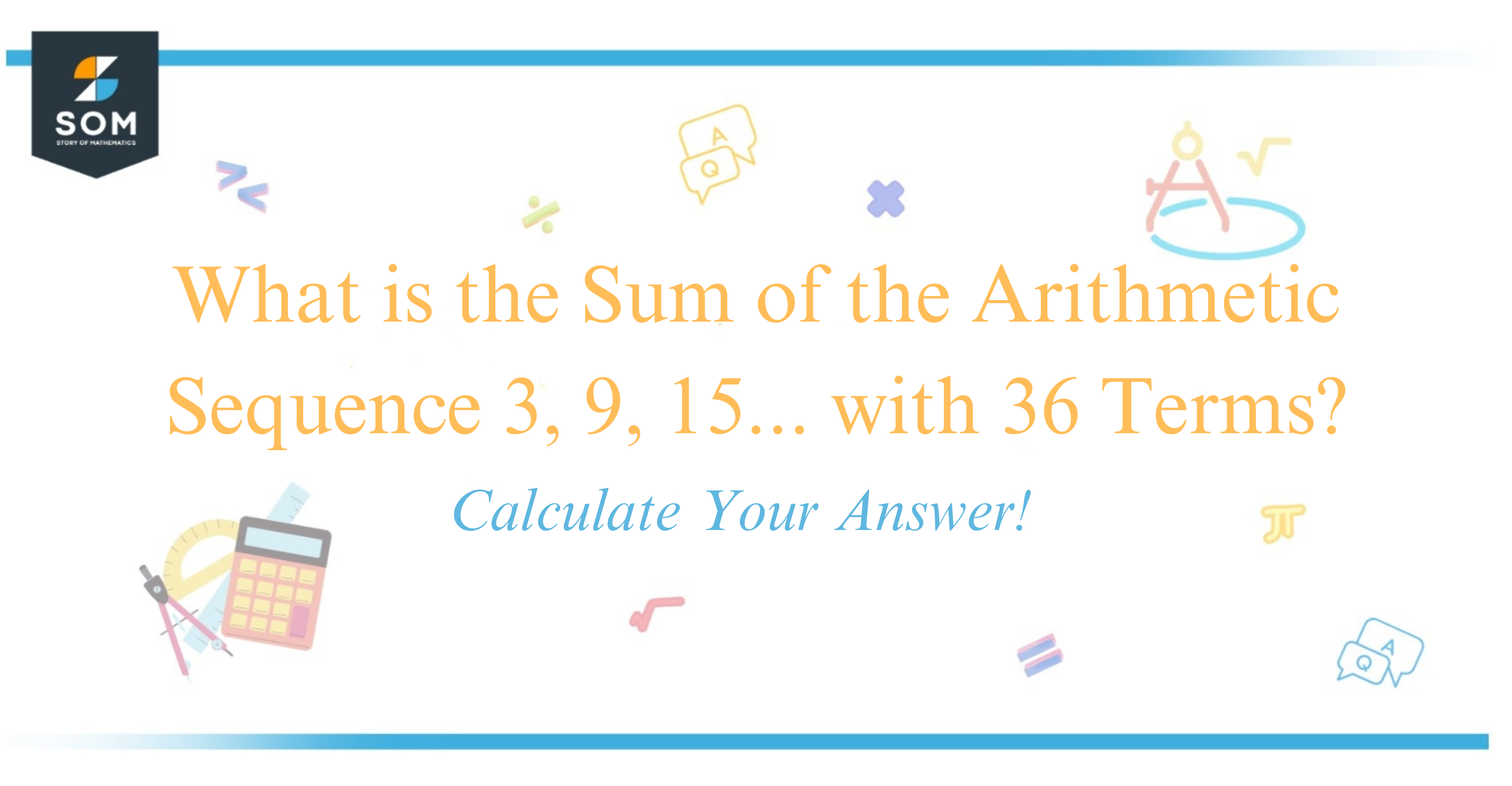
The sum of the arithmetic sequence starting with 3, increasing by 6 each time for a total of 36 terms, is a value that can be found using the arithmetic series formula.
An arithmetic sequence is an ordered set of numbers where each term after the first is found by adding a constant, known as the common difference, to the previous term. In the given sequence, starting with 3 and with a common difference of 6, the first few terms are 3, 9, 15, and so on.
To find the sum, we use the arithmetic series sum formula $S_n = \frac{n}{2}(a_1 + a_n)$, where $S_n$ is the sum of the sequence up to the ( n )-th term, $a_1$ is the first term, and $ a_n$ is the last term. By identifying these values and substituting them into the equation, we can determine the required sum.
Calculating this sum, we uncover not just a number, but a gateway to understanding the predictable nature of arithmetic sequences—a consistency that is both simple and elegant.
Calculating the Sum of Arithmetic Sequences
To calculate the sum of an arithmetic sequence, I rely on a simple yet powerful formula. Arithmetic sequences follow a pattern where each term is equal to the previous term plus a constant difference, known as the common difference. In the sequence given, 3, 9, 15, and so on, the common difference (d) is 6.
Here’s the general formula to find the sum (S) of an arithmetic series:
$S = \frac{n}{2} (a_1 + a_n)$
In this formula:
- (n) stands for the number of terms
- $a_1$ represents the first term
- $a_n$ is the last term
The sequence starts at 3, and there are 36 terms. To find the last term $a_{36}$, I use the specific form of the arithmetic sequence formula:
$a_n = a_1 + (n – 1)d$
Now, plugging in the values, I get:
$a_{36} = 3 + (36 – 1) \times 6 = 3 + 35 \times 6 = 213$
With the first and the last term at hand, here’s how I compute the sum:
$S = \frac{36}{2} (3 + 213) = 18 \times 216 = 3888$
So, the sum of the first 36 terms of the sequence is 3888. This approach of using the arithmetic series formula is universally applicable and doesn’t require me to add all terms individually, making it excellent for sequences with a large number of terms.
For those not keen on manual calculations, an arithmetic sequence calculator is a convenient tool that automates this process. Enter the first term, common difference, and the number of terms, and it outputs the sum instantly.
However, understanding the derivation and the application of the formula is beneficial for grasping the fundamental concepts in arithmetic progressions.
Conclusion
In this exposition on the summation of an arithmetic sequence, I’ve established how to derive the sum when given a set of parameters. My focus was narrowed to the sequence 3, 9, 15…, extended to include 36 terms. The arithmetic sequence starts with an initial term of 3 and progresses by consistently adding the common difference of 6.
To calculate the sum, I applied the formula for the sum of an arithmetic series, which is $S_n = \frac{n}{2} (a_1 + a_n)$, where $S_n$ is the sum of ( n ) terms, $a_1$ is the first term, and $a_n$ is the last term. For 36 terms, this translates to:
- Determine the last term $a_{36}$ using $a_n = a_1 + (n – 1)d$
- Calculate $a_{36} = 3 + (36 – 1) \times 6$
- Find $a_{36} = 3 + 35 \times 6 = 213$
With these values, the sum of the first 36 terms is:
- $S_{36} = \frac{36}{2} (3 + 213)$
- $S_{36} = 18 \times 216$
- $S_{36} = 3888$
Understanding and utilizing this method allows anyone to ascertain the sum of an arithmetic sequence of any length, so long as the first term and the common difference are known. The joy of sequences lies not just in finding patterns but also in applying formulas that bring numerical certainties to light.
